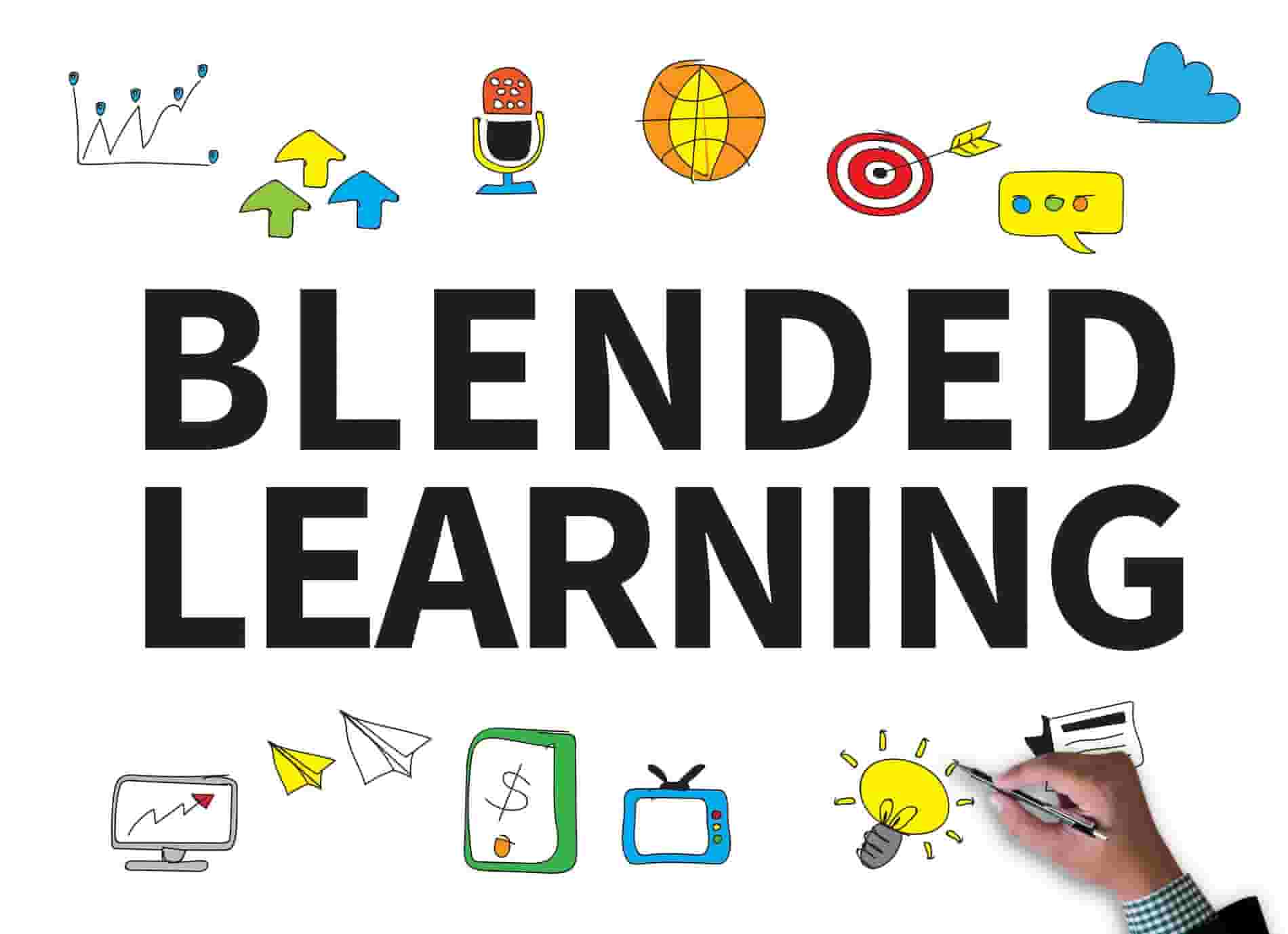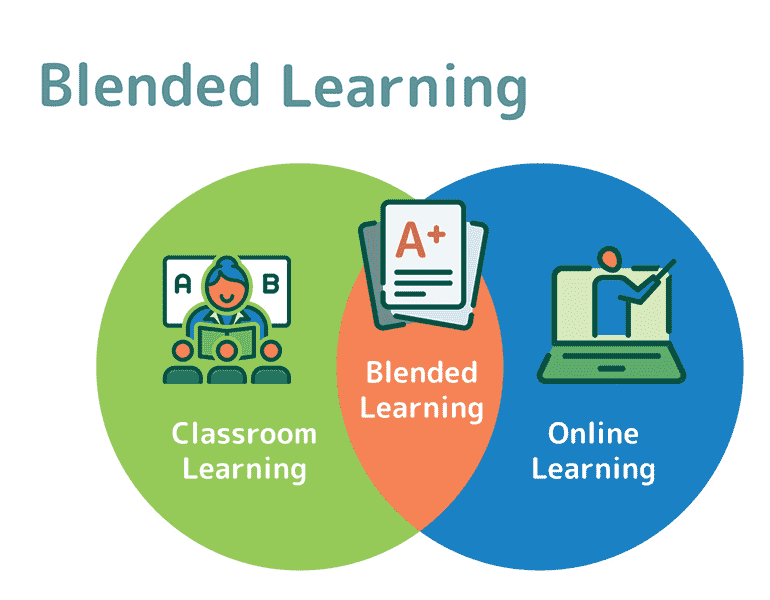Methods of Teaching Blended Learning Courses
Effective Methods for Teaching Blended Learning Courses
The phrase "blended learning" refers to instructional strategies that combine the convenience of online learning with the traditional classroom experience. Let's talk about excellent blended learning course delivery in this blog. Finding a definition of blended learning that is acceptable to everyone is challenging because it is so context-specific. However, it is frequently referred to as integrated learning or hybrid learning. The majority of colleges in the world use blended learning, where instructors and students interact both in-person and online. The sessions, however, can also take place online or in person. On-site and online resources can be accessed. The use of a virtual environment for learning rather than just studying in one.

Advantages of Blended Learning Programs at Work
Employee training is frequently done at workstations in a training room in any firm. Even while e-learning has gained popularity over the years, some employees may not find it motivating due to its proactive nature. Many people prefer to learn the traditional approach, which involves a teacher because they spent a large portion of their youth in classrooms. However, the majority of the learning throughput in instructor-led courses depends on the instructor's abilities. Moreover, when workers are dispersed across time zones, face-to-face engagement is impossible. E-learning has here offered a workable substitute as a remedy for this problem. The combined issues of traditional and electronic learning can be resolved via blended learning. The benefits of blended learning over conventional eLearning techniques are as follows.
Let's examine some of the many advantages it can provide for workers:
- 1. Blended learning is affordable:
Each e-learning course has its own set of restrictions. The eLearning course content lacks customization options because it is already completely created. Here is further information on whether personalized learning solutions help resolve pressing business issues. A teacher is always available for guidance in blended learning. As a result, the teacher can cover any material that isn't included in the online program. As a result, you can save money by not having to buy or design any course materials.
- 2. The Time-Effectiveness of Blended Learning:
When employees are not being trained, the productivity of the whole project and the team frequently suffers. Employees can learn at their own pace and time with the aid of blended learning courses, though, as the majority of the resources are accessible online. When needed, instructors are available. Consequently, employees are able to complete their job-related duties and complete their training without sacrificing.
- 3. Blended learning is a more productive training method.
With the use of numerous interactive learning tools, blended learning courses give employees a special chance to grasp difficult ideas online. As a result, the concepts at play are better understood. Employees can approach experts with questions or issues they may have with the practical implementation of theoretical principles since it is convenient to do so. Employees can also communicate with one another about their successes and concerns, which enhances collaboration and teamwork. Another special benefit of blended learning is its separate focus. Employees that struggle in particular areas might improve their skills on their schedule. This enables students to practice and boldly address their weaknesses on their own.
-
4. Blended learning can be flexible and at your own pace.
The varying schedules of different employees can be overcome through blended learning. Additionally, not all employees find it easy to learn at the rate that a training program dictates. The purpose of blended learning is to enable employees to study at a speed that is convenient for them. For increased learner engagement, try these 10 eLearning design strategies. An employee can decide whether to work through more material in training one week while choosing to go more slowly the following week. As a result, learning can be done more successfully. Instructor consultation in blended learning is one-to-one, in contrast to classroom instruction. As a result, learning can be much more effectively facilitated by receiving individual attention.
Blended learning has measurable results
Both self-guided and classroom-based courses require a lot of work to collect participant feedback. However, blended learning can be easily tracked and measured when using a learning management system. It enables progress evaluations of personnel. Additionally, it enables staff members to provide candid feedback on how helpful the course was, frequently anonymously. The organization's future training initiatives can be developed based Blended learning delivery using cost-effective methods There are several ways that blended learning enables businesses to cut costs. Even better, some of them can increase the training program's effectiveness.
- 1. Online education programs:
Classes can be streamed live. So that any questions students might have can be answered by an expert. Organizations frequently struggle to locate skilled trainers to fulfill their training requirements. Retaining a trainer for the entire training session in a traditional classroom can be time-consuming and expensive. Blended learning can greatly reduce this cost by using pre-recorded video lectures and virtual classrooms for doubt-clearing.
- 2. Flipped Education:
Blended learning has been extensively explored with methods to increase learning's efficiency and decrease its time commitment. One strategy is to flip the classroom. Training materials are given to trainees in advance so they can review them and try to understand as much of the information as they can. As a result, they are more prepared for class discussions because they are aware of the issues that will be covered. They can also work at their own pace and on their own time. Since they are not compelled to take time off from their normal jobs, projects can continue as planned, saving the company overhead costs.
- 3.Webinars
Businesses can arrange webinars that can be accessed on any device and from any location. Since no special training site is necessary, webinars are economical. A pre-recorded presentation that is freely accessible online is another option for organizations. They can also have training for their staff delivered by an external teacher, an internal SME, or both.
-
4. Learning management system
Administration and evaluation of any classroom training course are two of the most difficult jobs involved. Not only does it take time, effort, and money to plan and deliver training, but it also needs these resources to gauge how well the staff is doing. Learning management systems manage all of this in blended learning. An LMS will improve the organization and management of blended learning courses. These programs are entirely capable of managing a course, from notifying all parties concerned of the schedule to the documents required for the training. In addition, they are capable of carrying out evaluation exercises and delivering a final progress report. Here are some additional tips on how to use your LMS to set up a mixed-learning environment.


Conclusion:
For both large and small businesses, blended learning is currently regarded as the most effective training solution. It offers a rare blend of high efficiency and cost-effectiveness that is difficult to find elsewhere. Companies can use blended learning courses to upskill their staff members. This will enable them to perform their jobs more successfully while also maximizing the time they spend on tasks that provide fruitful output.

LEAVE A REPLY
Your email address will not be published. Required fields are marked *